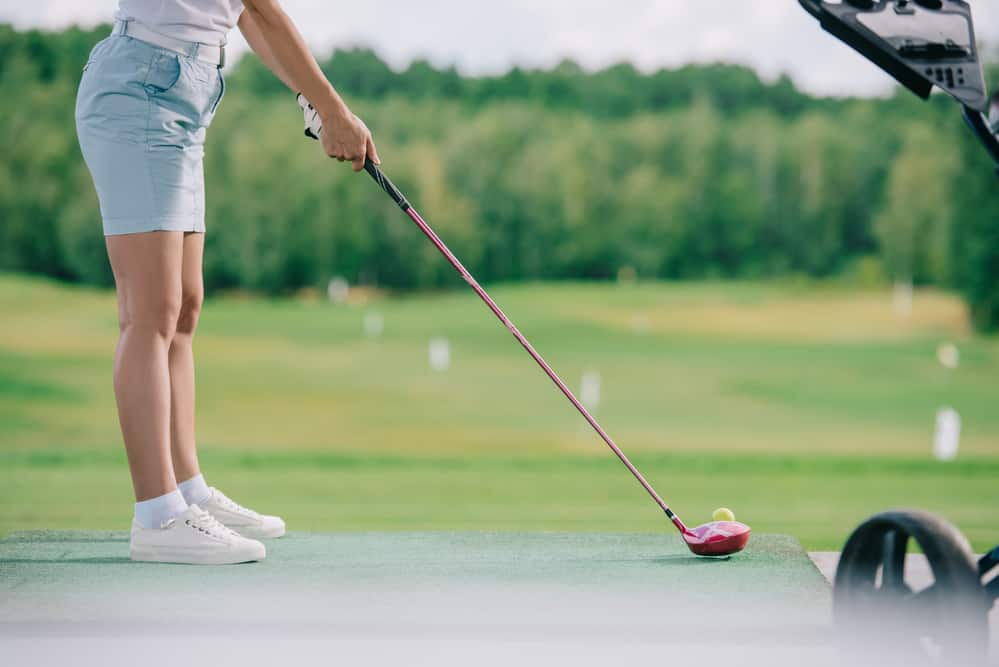
The lie angle is a very important fitting statistic.
If you don’t have your lie angle correct, you are going to notice an effect on the way that you perform on a golf course.
The lie angle is not always the easiest thing to measure and determine, but there are ways that you can tell whether or not the lie angle of your golf clubs is correct.
If you are wondering what your lie angle is on a certain club and whether or not you need it to be adjusted, we have all the information that you need.
How Do You Determine Lie Angle For A Golf Club?
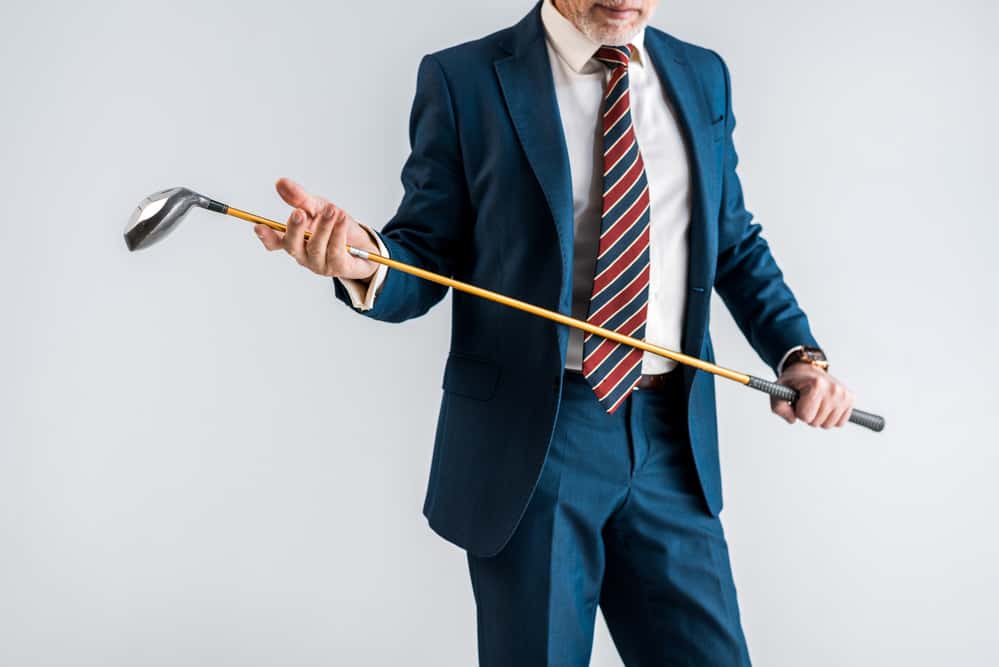
To determine a lie angle for a golf club, you will need a lie and loft machine.
A golf lie and loft machine is a simple mechanism that you place your golf club in.
When the golf club is in the lie and loft machine, you will be able to read it to get the exact measurement of the lie and the loft of the golf club.
The loft will give you an idea of how high the ball will launch, while the lie of a club is more of the way that it will sit on the ground.
Each golf club in your bag has both a loft angle and a lie angle.
If you don’t have a loft and lie machine at your home (which most people don’t), then you can simply find a local club fitting location where they can test or fit the club.
Most golf shops are going to have one if they do any kind of club repair.
However, determining the lie angle of a golf club is more about finding the right fit for your game than determining the actual lie angle of the club.
Most golfers want to make sure their lie angle is a good fit for their height and arm length rather than knowing the exact specifications of the club they are swinging with.
Most golfers need to know if they need a club that is one degree upright, one degree flat, or anything similar to this number.
Determining if your clubs are the right lie angle for you will be slightly easier than measuring the exact lie angle.
What Is Lie Angle?
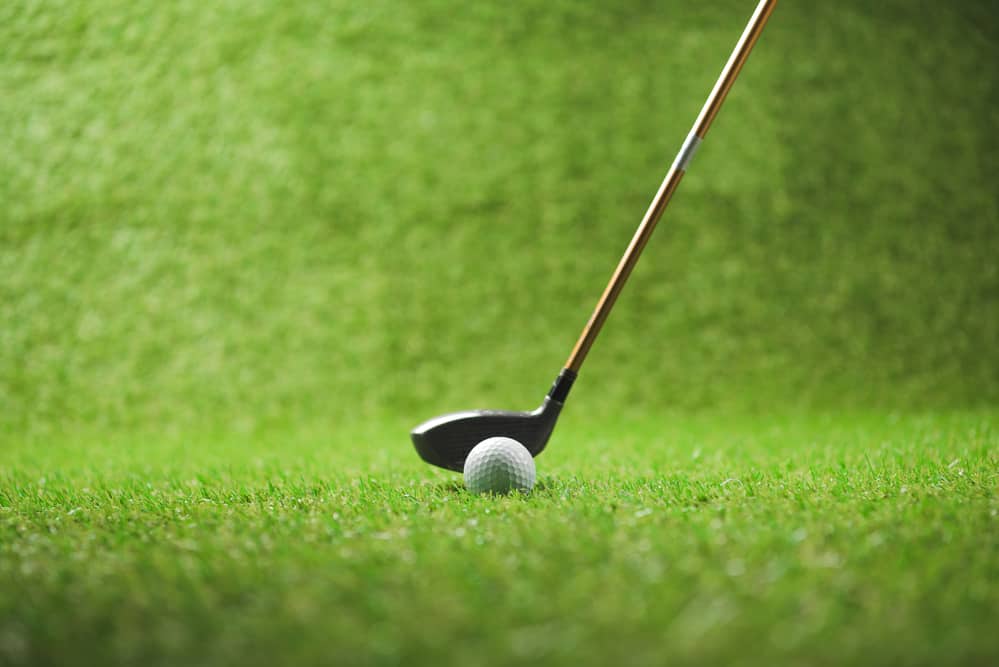
The lie angle is a measurement taken at the setup that is formed by the center of the shaft and the sole of the club head.
If the lie angle is correct, the sole of the club will be touching the ground at setup.
Remember that in golf, the setup position is where you will want the club to return at impact.
For golfers who have the toe of the club too far up in the air or the heel of the club off the ground, the lie angle is going to be considered incorrect.
This can cause some imperfections at impact that will result in inconsistent shots.
Why Does Lie Angle Matter?
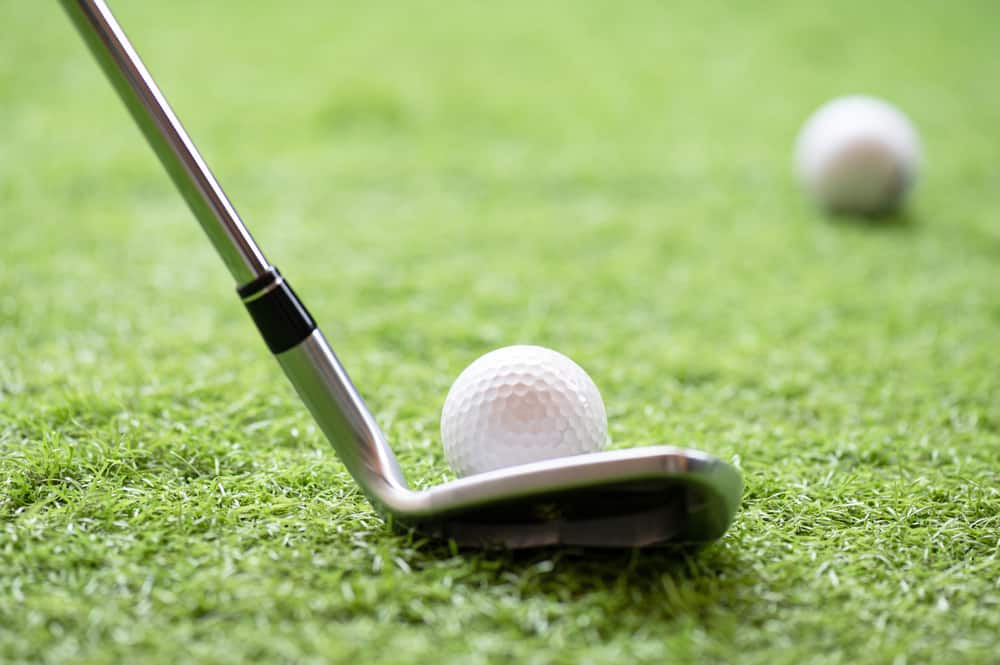
The biggest problem with a lie angle is that if it is wrong, you will have a hard time hitting the ball straight.
Even if you take an excellent swing, a club that has an incorrect lie angle will result in a shot that is not headed toward the target.
The two fitting metrics that club fitters will find to be problems are the length and the lie of the club.
Therefore, it is essential to go for a golf club fitting and make sure that your lie angle is correct.
Here are some of the things you need to know about lie angle and how it is going to impact the shots that you hit.
1. Standard Lie
A standard lie means that the sole of the club is going to sit flat on the ground when a player takes a basic setup.
With a basic setup, golfers will feel as though their arms are correctly hanging at their sides, and they don’t have to stand too upright or too slouched.
Ensuring that the club is flat on the ground and the lie is standard or flat is the goal for every golfer.
When the lie is standard, and the club is fitted as it should be, golfers can get a straight and high ball flight.
2. Flat Lie
A flat lie is when the heel of the club is sticking up a little too far above the ground.
The resulting shot is something that goes to the right.
The flat lie is not a shot that you will want to hit, and it often happens to players who are too tall and playing with equipment that doesn’t fit them properly.
The fix is to have the club adjusted to be more upright.
When this happens and the manufacturer changes the angle, the lie will become closer to standard, and it won’t be as flat.
If a golf shot goes out to the right, it ends up causing you to lose distance and potentially miss the golf green as well.
This is, of course, a frustrating issue to run into, but it’s even worse when it could easily be fixed by adjusting the lie angle of the club.
3. Upright Lie
The upright lie is when the golf club sits on the ground with the toe up in the air.
If the toe of the golf club is up in the air, chances are the player is a bit shorter in stature.
Sometimes players need to stand further from the ball, and this causes the toe to go up in the air.
Ideally, we want the sole of the club to be flat on the ground and hit the golf ball in the middle of the club face.
The upright lie can be made by ordering golf clubs a few degrees flat.
The flat lie helps to straighten out shots and make it easier for golfers who tend to hit the ball a bit too far left.
Methods To Check If Your Lie Angle Is Correct
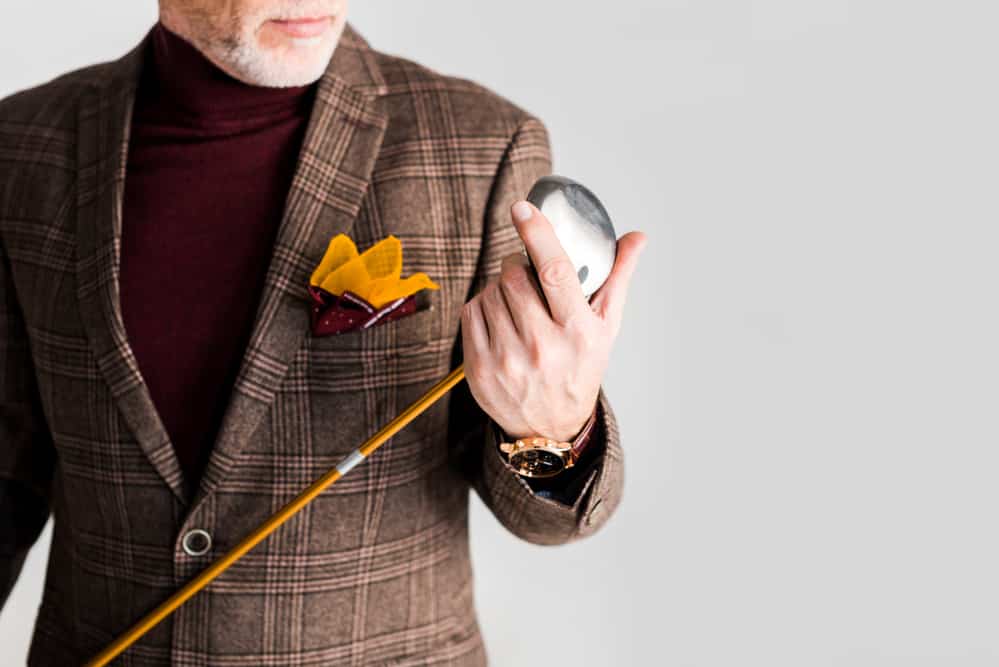
As we have mentioned, it is more important to ensure that your lie angle is correct than to know the exact number of your lie angle.
Understanding that your irons need to be made two degrees flat or one degree upright to get them to work for your game is an important step.
Therefore, you must make sure your lie angle on your clubs is correct.
The lie angle is standard for most people as that is how it will come from the factory.
For the average height golfer with average arm length, golf clubs with a standard lie angle are going to be the perfect fit.
However, for those who are taller or shorter, the lie angle likely needs to be adjusted quite a bit.
Here are a few ways to determine what your lie angle should be and whether or not you need to do some tweaking to your clubs.
1. Marker Method
To use the marker method, you will need a marker, a golf ball, and your golf club.
Although many people use a permanent marker on a golf ball, for this method, you actually want a marker that is going to transfer its color to the club head.
This may mean that you need a traditional washable marker for this process.
The idea is that you are going to try and get the marker line on the golf ball to transfer to the clubhead.
Set the golf ball up with a thick vertical line.
Then put that line directly behind your club head.
When you swing the club back, try and make the best contact that you can with the ball.
Once the ball is hit, you should be able to look at your club head and see where the golf ball struck.
If the golf club shows a line that was tilted toward the toe of the club, the club is going to be too upright, and it needs to be made flatter.
You may also see a line that is tilted toward the heel of the club, and in this case, it is too flat.
When the club is too flat, the fix is to make it more upright.
Overall, you will notice that this is a good method even though it may not tell you exactly what your new lie angle should be.
Instead, you get an idea of whether your angle is right or wrong.
The marker method is a good one, and if you find that your marker line is essentially straight, you can feel comfortable knowing that the overall fit of your golf club is precisely what you need it to be.
2. Impact Tape
Golf club companies make something called impact tape, but sometimes, it’s called fitting tape.
There is one tape that goes on the center of the club face to determine where a golf ball is being hit.
However, there are other areas of the club head where you can place tape to help you determine if it is a proper fit for your needs.
The lie angle tape actually fits on the bottom of the club.
This means that when you hit through the golf ball on a lie board, the area where the bottom of the club strikes the ground will be represented on the tape.
If the club strikes too far towards the heel or the toe, the club can be adjusted to the needs of the player.
Overall, impact tape is a great way to determine if a golf club fits a player properly, but this is not something that all golfers have in their golf bags.
A local fitting center or golf professional may have the tape, and you just need a piece or two to get the general idea as to whether your clubs are the proper fit.
3. Ping Fitting System
The Ping fitting system was designed to make it extremely easy for golfers who need a custom lie angle on their golf clubs.
Ping has created this system as they are very serious about the clubs that they produce having the proper lie angle and fit for a player.
The way the system works, you will need your height and the length from your wrist to the floor to get the proper number from the Ping custom fitting chart.
The great thing about the Ping chart is that you don’t have to be purchasing Ping clubs for this fitting chart to give you the proper dynamics.
Golf club fitting can be so important, and for Ping to have shared their findings with the rest of the golf world is undoubtedly a benefit.
Once you know what Ping fitting color code you are, you could really apply that to any brand of club that you choose.
The Ping system also allows golfers to find the proper length for the golf clubs they need.
The Ping fitting chart can be applied to hybrids, but most golfers will find that the fitting information is most needed on irons.
Many players can get away with a standard fitting for the long clubs in their bag, but the irons will produce some poor results if they do not fit correctly.
Use the Ping fitting system as a starting point to see if your clubs are fitted anywhere near the normal range.
Once you have determined this, you can then decide if you need to have your clubs adjusted, or they can stay at the standard loft and lie that they are currently fitted to.
Do I Need A Custom Golf Fitting For Lie Angle?
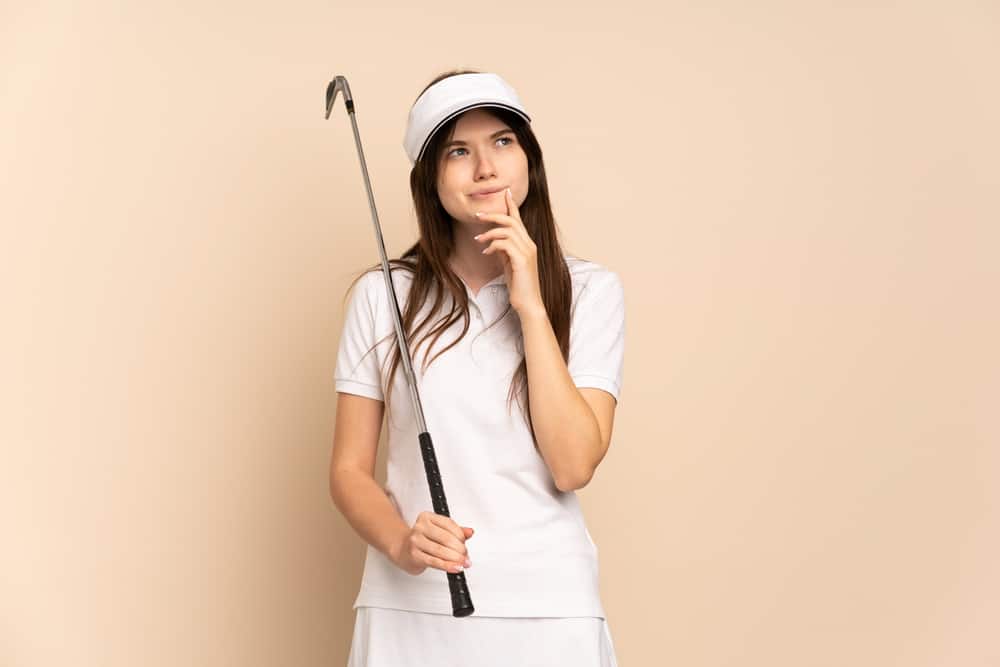
Although a custom fitting is a great way to try out new equipment, the most important part of this fitting is to get the proper specifications on a set of clubs.
If your clubs are not fitted to your needs as a player, you can expect to see inconsistent results.
The two most critical fitting factors that a player will get from a fitting are the length and the lie angle of a club.
You would think that length and lie angle (and even loft) would be standard from one golf club manufacturer to another.
However, this is not the case.
Each manufacturer has its own idea of what standard is, which has made choosing your golf clubs even more difficult.
For instance, if you were fitted years ago to be standard with a Callaway game improvement iron, that does not necessarily mean you will now be standard with a TaylorMade game improvement iron.
The fitting for the lie angle is a tough one to get right without the proper fitting system in place.
For golfers who are serious about the game and play quite often, it is important to go for a fitting.
For players who have a complete set of golf clubs and only play once or twice a year, the golf club fitting is going to be much less critical.
Essentially, the fitting of the golf club means that you will likely have to pay to have the clubs adjusted or to order a new set that has the proper specifications for your needs.
This, of course, increases the overall costs, and you must be willing to pay for that as well.
If you know you are never going to spend the money to purchase brand new custom clubs, save yourself the time and skip the golf club fitting.
If, however, you are making a serious commitment to your game, and you know that it is time to play with the proper equipment, then schedule a club fitting today.
Many locations will take the cost of your fitting and credit it towards your purchase of new golf clubs.
This is a great way to ensure that the money you are spending is going to give you the proper value.
Conclusion
We hope that you now feel a bit more knowledgeable when it comes to the lie angle of your golf clubs.
Lie angle is an important factor to consider in the game, but it certainly is not the only one that matters.
Ensure that you have a general idea of whether or not you need upright or flat golf clubs.
The taller you are, the more upright the clubs typically need to be.
The shorter you are, the flatter the clubs need to be.
This is a good starting point, but a custom club fitting will give you the best results for your game.
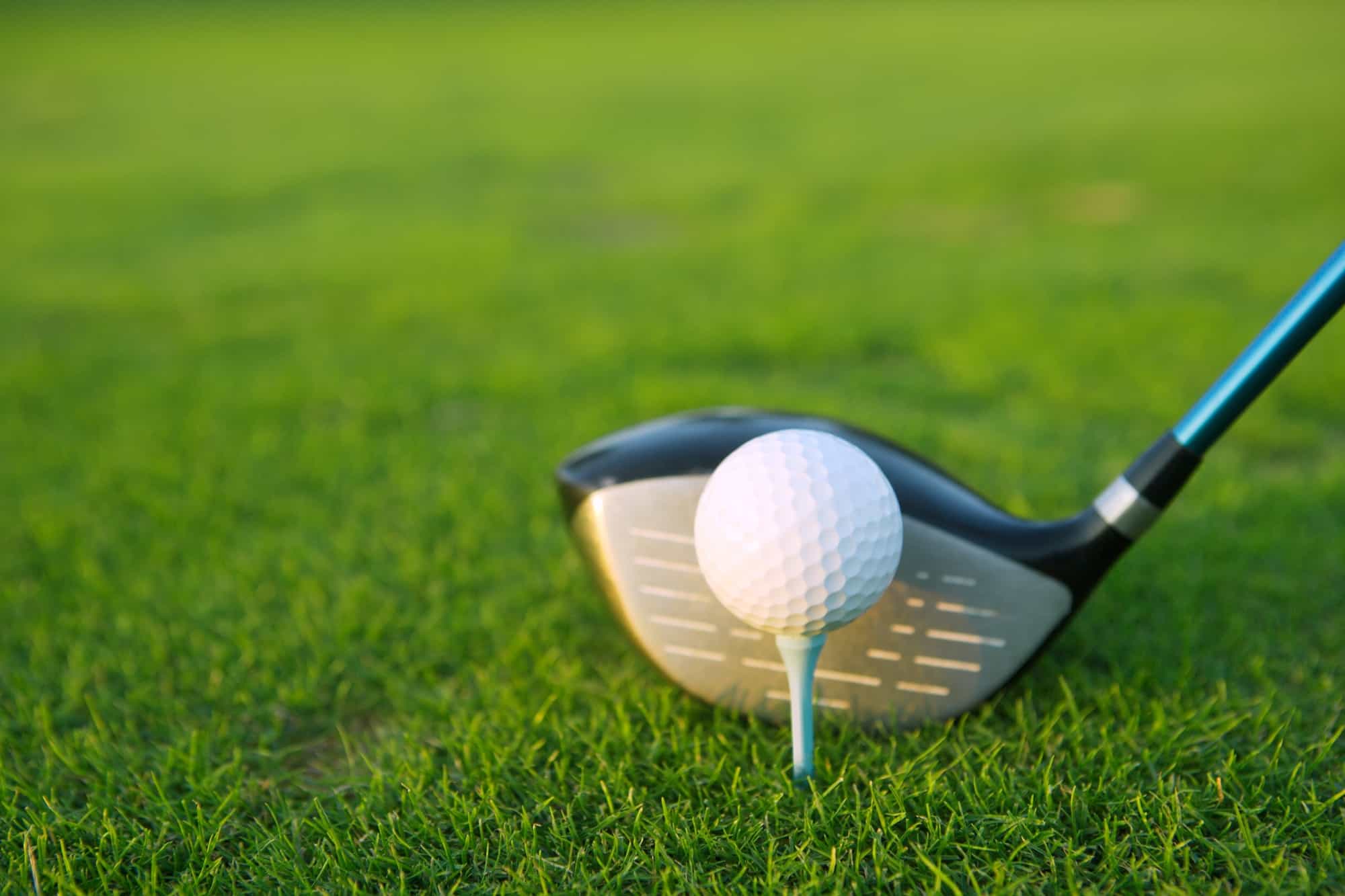
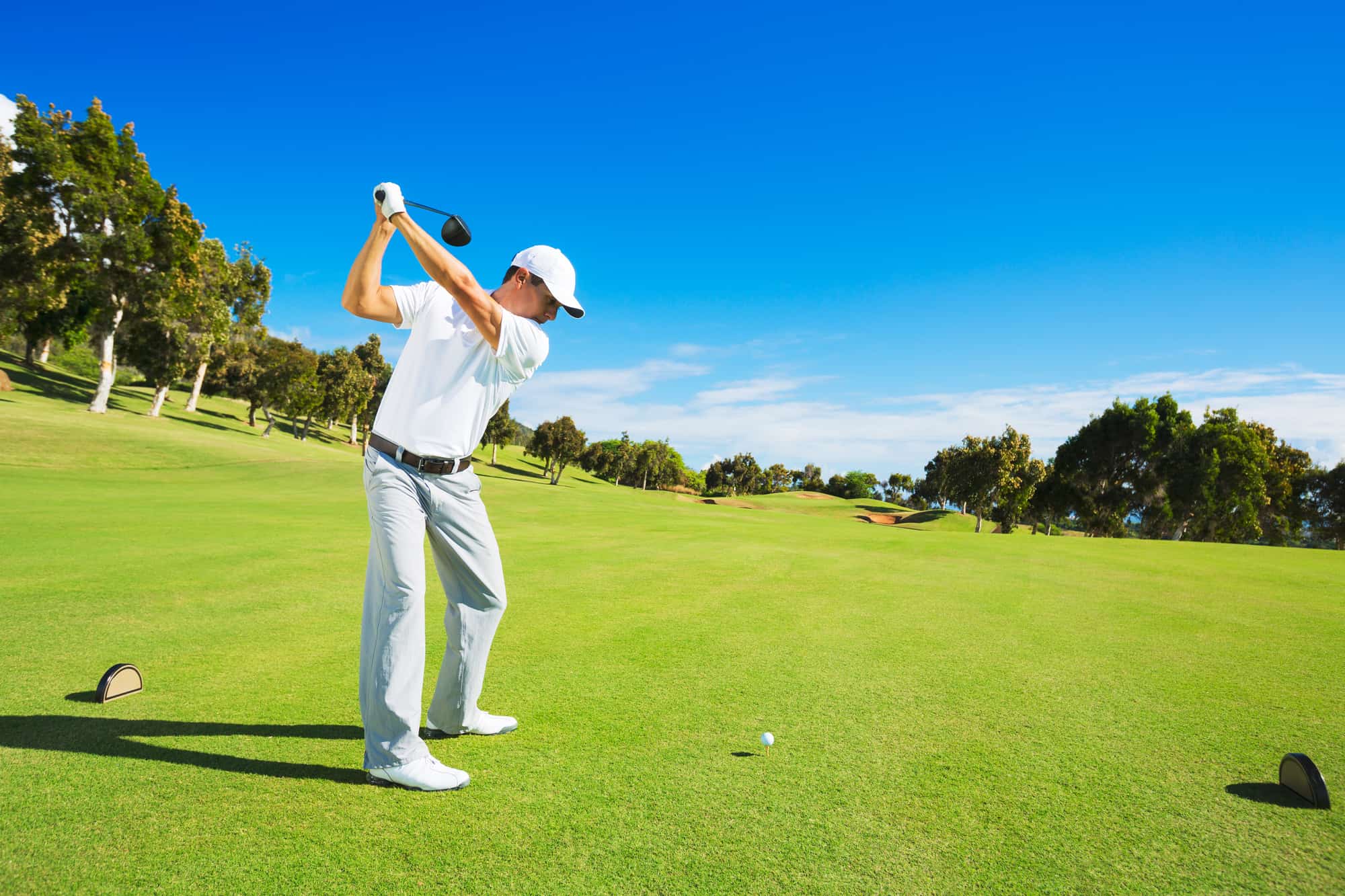
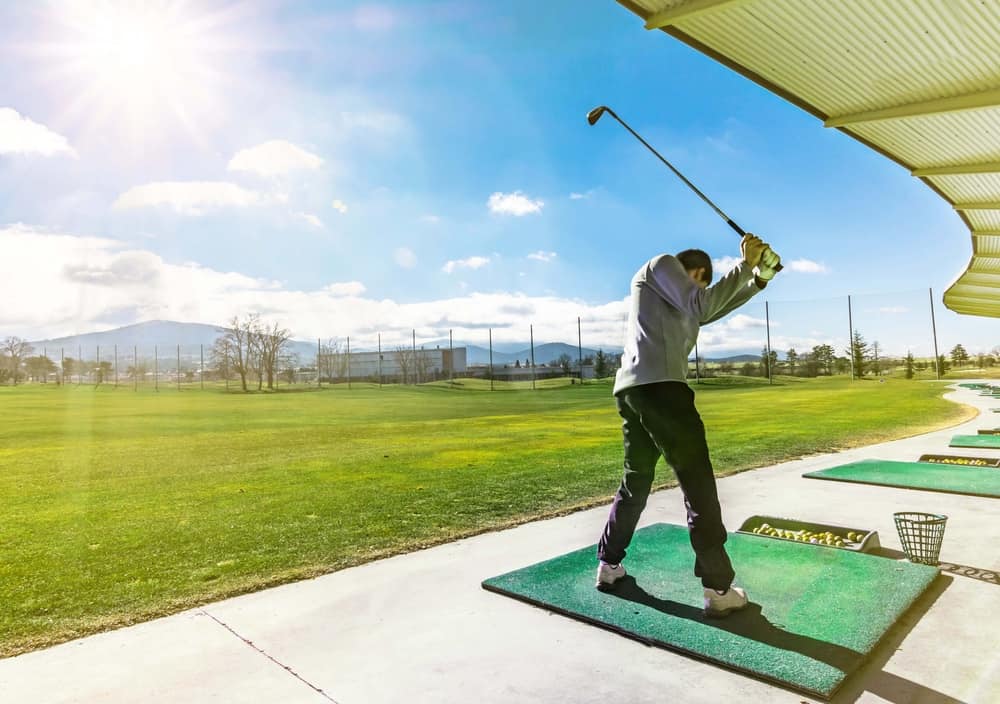
Leave a Reply